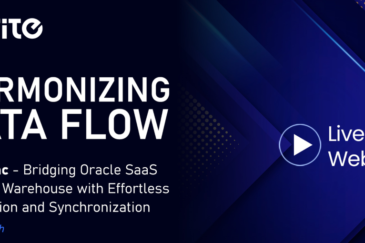Trial Balance Migration from Oracle EBS to ERP Cloud

- May 4, 2023
- Jhansi Rani
- 0
What is a Chart of Accounts?
A Chart of Accounts (COA) is a comprehensive list of all the accounts an organization uses to record its financial transactions. Each account is assigned a unique code or number and represents a specific category of financial information, such as assets, liabilities, revenue, expenses, and equity. The COA serves as a framework for organizing financial data, and facilitating the recording, classifying, and reporting of financial transactions. It is essential to maintain accurate financial records and generate financial reports, such as the balance sheet, income statement, and cash flow statement.
The COA is also important because it provides a standardized and consistent approach to financial reporting, making it easier for key stakeholders to understand and compare financial information across different organizations or periods. It allows businesses to track financial performance, make informed decisions, and comply with accounting and regulatory requirements. Moreover, a well-designed COA can enhance financial transparency, enabling businesses to identify trends, patterns, and anomalies in their financial data. It can also help to improve financial control and accountability, as it provides a clear structure for assigning responsibility for financial activities and monitoring financial performance.
Chart of Accounts Migration from Oracle EBS to Oracle ERP Cloud
COA Migration from Oracle EBS to Oracle ERP Cloud is a critical process that requires careful planning and execution. The COA is the backbone of an organization’s financial reporting and provides a standardized framework for organizing and recording financial data. It involves several essential steps, including:
Analyze the existing COA in Oracle EBS
It is essential to analyze the existing COA in Oracle EBS and identify the accounts that must be migrated to Oracle ERP Cloud. This analysis should also identify any accounts that can be combined or eliminated to simplify the COA.
Configure the COA in Oracle ERP Cloud
Before migrating the COA, it is necessary to configure the COA structure in Oracle ERP Cloud. This involves defining the segments, values, and hierarchy of the COA, as well as the account types and subtypes.
Map the COA accounts
Once the COA structure is defined, the next step is to map the accounts in Oracle EBS to the corresponding accounts in Oracle ERP Cloud. This process involves mapping the account codes, descriptions, and attributes to ensure the data is accurately migrated.
Perform data validation
After mapping the accounts, it is crucial to perform data validation to ensure that the migrated data is accurate and complete. This involves reconciling the COA balances in Oracle EBS with the corresponding balances in Oracle ERP Cloud.
Migrate the COA
Once the data is validated, the final step is to migrate the COA to Oracle ERP Cloud. This process involves loading the COA data into Oracle ERP Cloud and verifying that the data is accurately migrated.
What are GL COA Migration Tools?
When migrating from one accounting system to another, such as from Oracle EBS to Oracle ERP Cloud, ensuring that the COA is accurately migrated to maintain accurate financial reporting is essential. GL COA migration tools automate the migration of the COA from Oracle EBS to Oracle ERP Cloud and simplify the entire process. Here are some key features and benefits:
Automate data mapping and transformation
GL COA migration tools automate the mapping and transformation of data, eliminating the need for manual mapping and reducing the risk of errors. These tools use predefined mapping templates to map the COA from Oracle EBS to Oracle ERP Cloud, making the migration process more efficient and accurate.
Support complex COA structures
GL COA migration tools support complex COA structures, such as hierarchical and multidimensional structures, ensuring that the migrated COA accurately reflects the structure of the source COA.
Provide data validation and testing
These tools provide data validation and testing capabilities, ensuring the migrated COA data is accurate and complete. They generate reports that enable users to verify the data integrity and validate the COA mapping and transformation rules.
Support incremental data migration
These tools support incremental data migration, enabling organizations to migrate the COA in stages rather than in a single batch. This helps minimize the risk of data loss or errors and enables organizations to test the migrated data before finalizing the migration.
Minimizes downtime
GL COA migration tools minimize downtime during the migration process, as they automate many of the manual tasks involved. This helps ensure the migration process is completed on time and within budget.
Why RiteCOA?
RiteCOA is a GL COA migration tool that simplifies migrating data from legacy systems to Oracle, making it fast, easy, and cost-effective. RiteCOA offers built-in adaptors for Oracle E-Business Suite R12 and Oracle ERP Cloud, standard templates for all ERPs, and extensive mapping options. RiteCOA empowers business users to convert trial balance data from one format to another per their defined source and target structures. It requires no training and is perfect for finance controllers, managers, GL users, CFOs, and implementation consultants.
With RiteCOA, you can quickly analyze your Chart of Accounts and consolidate a global COA structure even with multiple ERP systems running in your company. You can also use RiteCOA as a ‘what-if’ analysis tool to preview your future trial balance during your financial transformation journey. RiteCOA also helps streamline your trial balance migration from legacy systems to Oracle ERP Cloud and maintain the integrity of your financial data.

Services
Products
Company
Copyright © 2024 Rite Software Solutions & Services LLC. All rights reserved.



